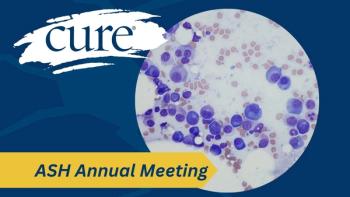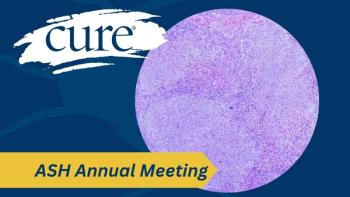
Tafinlar Plus Mekinist May Safely Improve Long-Term Survival in Patients with Rare Thyroid Cancer

After four years of additional follow-up, survival continued to improve and side effects remained tolerable in patients with anaplastic thyroid cancer receiving Tafinlar plus Mekinist.
Combination therapy with Tafinlar (dabrafenib) plus Mekinist (trametinib) demonstrated long-term efficacy and safety in patients with BRAF V600E-mutant anaplastic thyroid cancer, according to updated results from a recent study.
The combination was
Dr. Vivek Subbiah, an associate professor at The University of Texas MD Anderson Cancer Center in Houston, explained in an interview with CURE® that anaplastic thyroid cancer is a very rare and aggressive form of cancer, and these patients typically have a median survival of five to 12 months and a one-year overall survival rate of 20% to 40%. Prior to this therapy, despite surgery, radiation therapy etc. response rates to chemotherapy were less than 15%.
“We really needed a treatment for these patients. This area remained a huge unmet need for more effective therapies with evidence of longer-term benefit for these patients. Before thiswe had many drugs being tested in this (population), but unfortunately, most of them have not worked in this cancer and we needed a specific treatment for this,” he said. “This precision therapy filled a huge unmet need for these patients, giving them extended survival, the quality of life and also the gift of time.”
Subbiah and his colleagues analyzed data from long-term follow-up on the efficacy and safety of the combination therapy in 36 patients from that study with four-year additional follow-up, which was published in Annals of Oncology.
At a median follow up of 11.1 months, the overall response rate (the rate of a measurable response to the treatment) was 56%. This included three complete responses (the disappearance of cancer as a response to treatment) and the 12-month duration of response (the time a tumor continues to respond to treatment without growth or spread) was 50%.
Results also demonstrated a median progression-free survival (time during and after treatment when the patient lives without disease progression) and overall survival (time from diagnosis or treatment start when patients are alive) of 6.7 months and 14.5 months, respectively. In addition, the 12-month overall survival rate was 52%, which increased to 56% at 24 months
Subbiah said the updated data demonstrated that this combination therapy continued to be effective in this rare and hard-to-treat population.
“This is notable given the historic survival of less than six months in this disease. This updated analysis that we recently published … confirms the definitive benefit of this combination in patients with anaplastic thyroid cancer. It shows that patients do have long-term benefit from this combination of drugs, whichare convenient oral treatments,” he explained.
The most common side effects with this therapy included fever, low blood cell count, fatigue and rash, but there were no unexpected side effects observed. Overall, it was a reasonably well-tolerated treatment, Subbiah said.
“In totality of evidence, the benefit of this treatment outweighs the risk of side effects from this treatment,” he added.
Subbiah explained that patients with this anaplastic thyroid cancer should be tested for the BRAF V600E mutation.
“This is a testament to the power of recent development of precision medicine and precision oncology. I would say that patients with thyroid cancer, specifically anaplastic thyroid cancer, should be tested for this alteration so that they can benefit from this treatment,” he added.
With
“This is one of the most lethal cancers. It was rewarding as a cancer physician and clinical trial doctor to take care of these patients. We saw dramatic responses in these patients, and we saw these patients do very well on this treatment. We thank the motivated patients and their caregivers for enrolling on the clinical trial. ” he concluded.
For more news on cancer updates, research and education, don’t forget to





